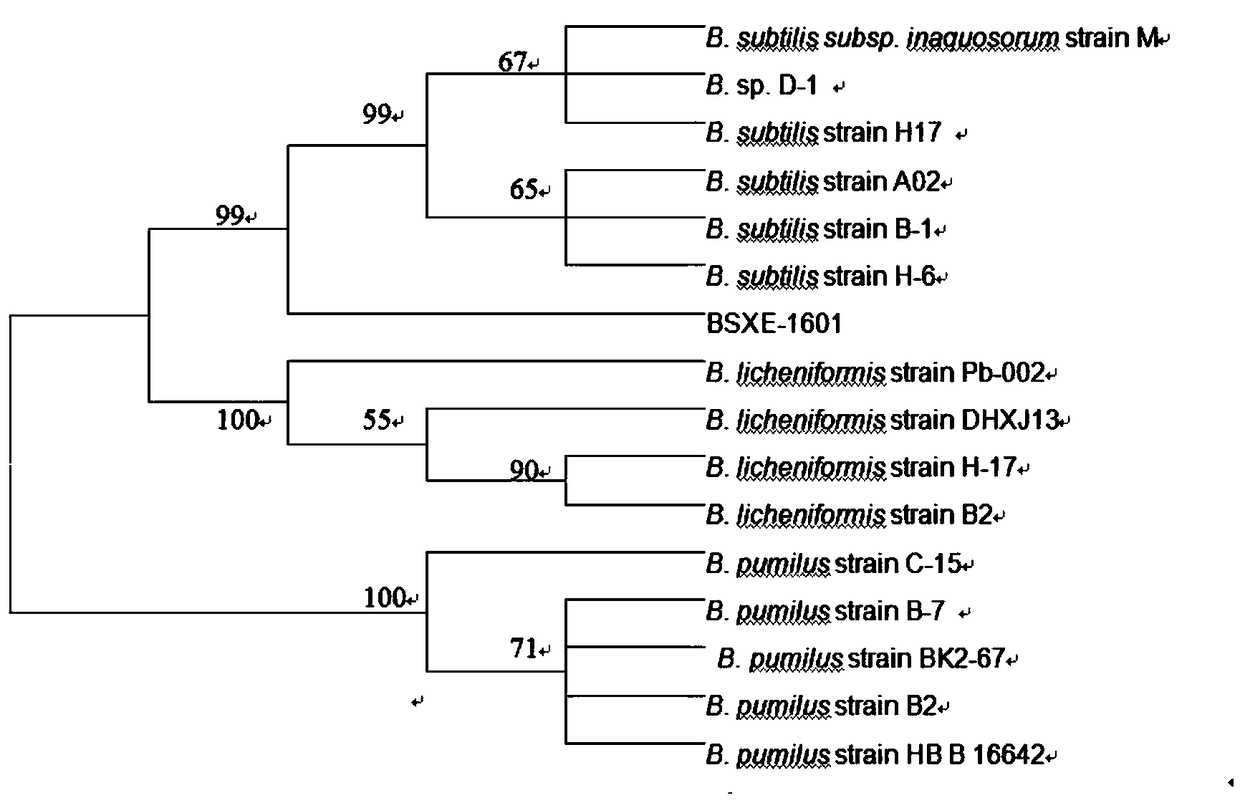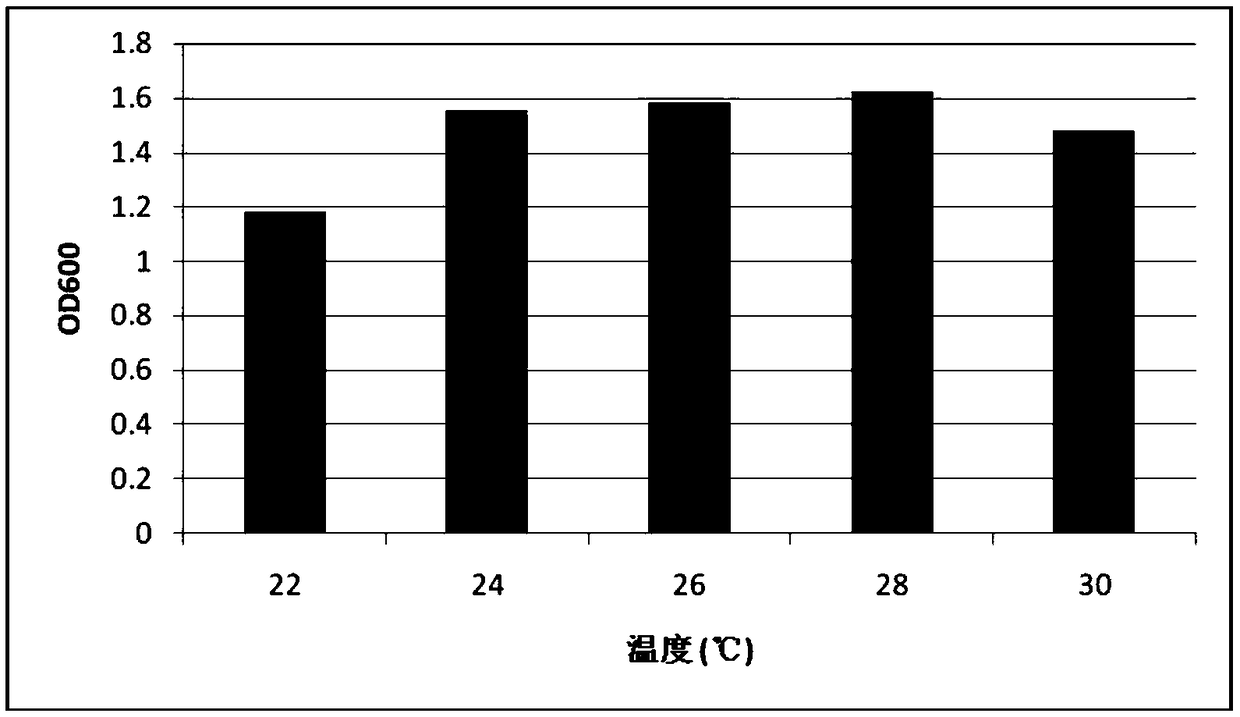Wide-spectrum bacillus for inhibiting aquatic product pathogenic vibrio and compound bacterial preparation thereof
The technology of Bacillus subtilis and Bacillus subtilis is applied in the field of Bacillus subtilis BSXE-1601, the preparation of compound bacteria preparations, and the field of compound bacteria preparations, which can solve the enhancement of drug resistance of diseased strains, reduce the immunity of cultured organisms, and the damage of cultured organisms. and other problems, to achieve the effect of promoting growth, improving aquaculture water environment, and promoting absorption and utilization.
- Summary
- Abstract
- Description
- Claims
- Application Information
AI Technical Summary
Problems solved by technology
Method used
Image
Examples
Example Embodiment
[0045] Example 1 Screening and isolation of Bacillus subtilis BSXE-1601
[0046] Collect the water body, bottom mud and intestinal feces of the prawns from the prawn farms, use the nutrient broth medium for bacterial enrichment, and separate the pure culture by streaking on the plate.
[0047] The isolated single strains were inoculated on nutrient agar plates coated with Vibrio parahaemolyticus, Vibrio alginolyticus, Vibrio vulnificus and Vibrio harveyi, by observing whether there is a bacteriostasis zone, and finally screening a pair of These 4 kinds of Vibrio strains with good antibacterial effect were named BSXE-1601.
Example Embodiment
[0048] Example 2 Classification and identification of Bacillus subtilis BSXE-1601
[0049] 1. Morphological characteristics
[0050] The characteristics of a single colony of Bacillus subtilis BSXE-1601 in a nutrient agar medium are: round or irregular shape, irregular colony edges, opaque lawn, off-white, moist surface, easy to pick. Gram staining and microscopic examination showed that the bacterium is Gram-positive, rod-shaped, spore-producing, and spores are mesophytic and oval.
[0051] 2. Molecular genetics characteristics
[0052] The DNA of Bacillus subtilis BSXE-1601 was extracted, and the 16S rDNA region was amplified and sequenced. The results showed that it was highly similar to the Bacillus subtilis sequence (see the instructions attached for details) figure 1 ), and finally determined that it belongs to the genus Bacillus subtilis.
[0053] 3. Physiological and biochemical characteristics
[0054] The physiological and biochemical characteristics of Bacillus subtilis BSXE-...
Example Embodiment
[0057] Example 3 Determination of growth conditions of Bacillus subtilis BSXE-1601
[0058] 1. Take the Bacillus subtilis BSXE-1601 bacterial solution, inoculate it in nutrient broth medium, and culture it at 22℃, 24℃, 26℃, 28℃ and 30℃ to determine its growth.
[0059] 2. Take the Bacillus subtilis BSXE-1601 bacterial solution and inoculate it into nutrient broth with pH values of 6.5, 7.0, 7.5, 8.0 and 8.5 respectively, and culture it at 28°C to determine its growth.
[0060] 3. Take the Bacillus subtilis BSXE-1601 bacterial solution, inoculate it in the nutrient broth medium, cultivate it under the conditions of rotation speed of 70r / min, 100r / min, 130r / min, 160r / min and 190r / min, and determine respectively Its growth.
[0061] The result shows: as attached Figure 2-4 As shown, Bacillus subtilis BSXE-1601 grows best at 28°C, pH 7.0, and rotation speed 190r / min.
PUM
 Login to View More
Login to View More Abstract
Description
Claims
Application Information
 Login to View More
Login to View More - Generate Ideas
- Intellectual Property
- Life Sciences
- Materials
- Tech Scout
- Unparalleled Data Quality
- Higher Quality Content
- 60% Fewer Hallucinations
Browse by: Latest US Patents, China's latest patents, Technical Efficacy Thesaurus, Application Domain, Technology Topic, Popular Technical Reports.
© 2025 PatSnap. All rights reserved.Legal|Privacy policy|Modern Slavery Act Transparency Statement|Sitemap|About US| Contact US: help@patsnap.com



